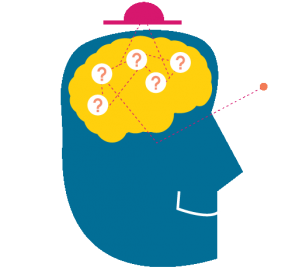-
1
Observe
Why – Across our nation, children ages 3 – 10 have the opportunity to develop and learn in schools for about 6 ½ hours a day, 180 days a year. The question is, what are they doing while they are there? How much of that time do children spend reading and writing, in gross motor activities, or collaborating with classmates? EduSnap provides a way to examine these experiences.
How – EduSnap quantifies how children experience their classrooms. Employing 25 codes, EduSnap provides an in-depth look at how children experience activity settings (e.g. Whole Group, Small Group, Transitions), content areas (e.g. Literacy, Science, Math), student learning approaches (e.g. Collaboration, Metacognition), and teaching approaches (e.g. Didactic, Scaffolds).
In Practice – Teachers are often surprised that the EduSnap Data reflect classroom experiences very differently from those they had thought they were providing. As they are helped to consider the data, they hone in on information that is not easy to overlook, such as 24% of the day (about 96 minutes) spent in Transitions, or 3% of the day (12 minutes) in Writing. Finally they start to ask questions about how the data can help them understand more fully how children feel and learn when they are in their classrooms.
-
2
Inquire
Why – The current educational climate of high-stakes testing and accountability has heavily reinforced the drive for perfection, which is in strong contrast to the continuous improvement model, which suggests perfection is an unattainable but always strived for goal.
How – EduSnap Data are simple, authentic, and provide a story most educators have yet to hear about their own teaching practice. EduSnap Data are not presented as a score or on a scale. They are presented as the proportion of time in which each EduSnap code was observed during the observation allowing educators to approach and interact with the data in a way that best meets their needs.
In Practice – Many districts and schools have benefited from the use of coaches to foster collaborative inquiry and reflection. EduSnap Data are presented in a variety of graphs that describe classroom practice using the EduSnap codes. Using a coach to lead discussions with teachers in a systematic manner provides a structure and rhythm to the data conversation.
-
3
Motivate
Why – Research tells us that data from classroom observations are a potent form of professional development and a powerful intervention. They help teachers:
- develop reflective practice.
- share their strengths and admit their challenges.
- gain new ideas and fresh perspectives about teaching.
- improve the quality of the learning experiences made available to children.
(Sheppard, Leifer, & Carryer, 1998)
How – We recommend the EduSnap Data be used as a catalyst for change, not as an evaluation. EduSnap has supported districts and schools across the nation in exploring some of their big issues, including the experience of young children as they move from pre-K to kindergarten. These FirstSchool Activity Setting graphs show radical, though typical, changes children experience. Increasing awareness of some of the fundamental problems children experience as they move from pre-K to kindergarten facilitates communication and smooths transitions across these critical years.
In Practice –
FirstSchool has used a version of EduSnap for many years as a way to help educators at every level move from using data as evaluation to using it as motivation for change. FirstSchool teachers have come to appreciate and anticipate data about classroom practices. This is what they have to say:
- “You don’t collect data and give it back to us as an ‘I gotcha’, you give it back to us as support.”
- “Now we are sharing data with one another. It is clear what successes we have had and we know what we need to work on.”
- “The data has helped us be more intentional and meaningful with every bit of our time. Time is so precious.”
- “I don’t have to feel like a perfect teacher. Data gives me the feedback that helps me engage in thoughtful and meaningful planning of how to engage kids in practices and activities that I know are going to make a difference.”
- “My data wasn’t perfect. How exciting!”
-
4
Support
Why – Classroom observation data are provided in multiple forms. Separately, not all data provide a clear picture of what has really changed. Being aware of this is essential when trying to use data to celebrate success and recognize challenge.
How – Data that are gathered across time periods provide a developmental picture of how things change at the classroom, grade, school, and district level. EduSnap users can make decisions about what they want to know and when they want to know it.
In Practice – The Lansing School District utilizes EduSnap in its iCollaborate Project, a pre-K – 12th grade reform effort using classroom observation data to determine a direction for professional development and to guide and monitor change. Each pre-K – 3rd grade classroom in the district has a full-day EduSnap classroom observation each year.
As the district, schools, and teachers changed how they used instructional time to increase or decrease children’s exposure to activity settings, EduSnap Data showed notable changes in content and teaching approaches as well.





